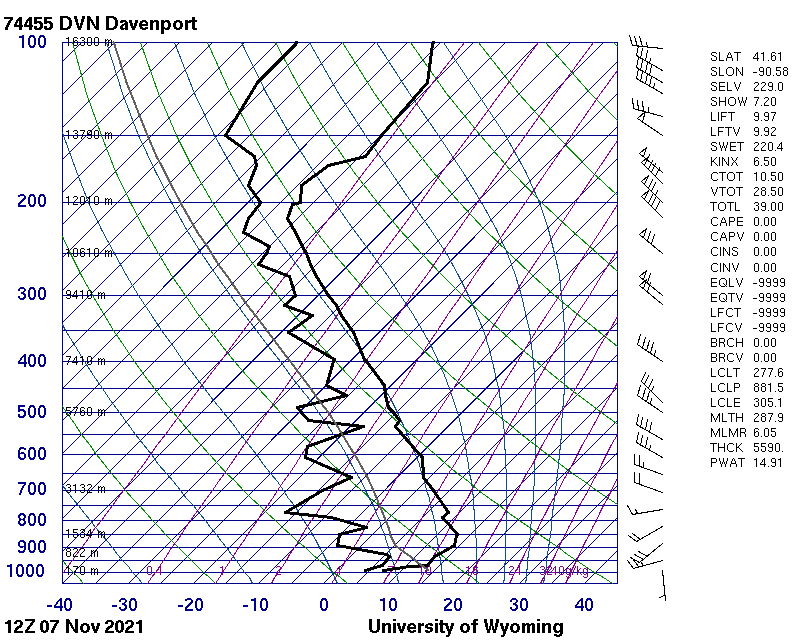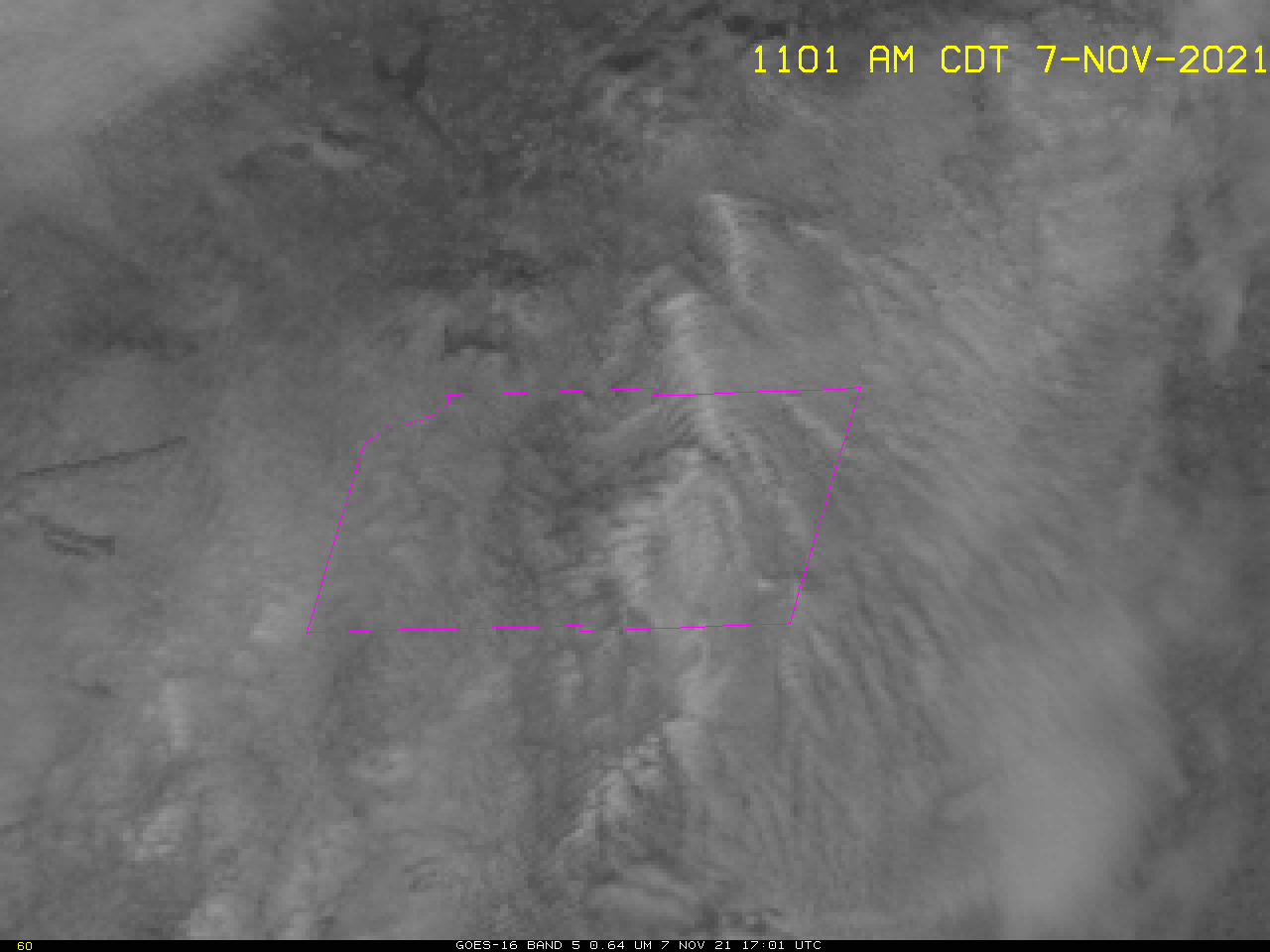Hole punch clouds over the Upper Midwest
On the morning of Sunday, November 7th, numerous elongated hole punch clouds were visible over the Upper Midwest, including parts of Wisconsin, Illinois, Iowa, and Minnesota. Also called fall streak clouds, these are a relatively rare phenomenon that form because of the unusual properties of cloud droplets.

While most people know the freezing temperature of water is 0 °C (32 °F), that’s only true when dealing with a flat surface. A curved droplet has more energy in it due to surface tension squeezing the droplet together, and so the air temperature has to be colder in order to make the droplet cold enough to freeze. As a result, clouds of liquid water below freezing are relatively common, especially in the spring and fall when temperatures at cloud level are just below freezing. These are called supercooled clouds.
Another commonly-known fact about water is if the relative humidity of the air is less than 100%, liquid water will evaporate. Again, that’s not necessarily true for cloud droplets. What is especially interesting is that the relative humidity required to support growth is bigger for a cloud droplet than it is for an ice crystal. Given an environment with both cloud droplets and ice crystals, the droplets will evaporate and the ice crystals will grow. This is known as the Bergeron-Findeisen process and is a key part of forming precipitation from cold clouds.
Both cloud droplets and ice crystals require a nucleus to form. Dust, pollen, and other aerosols are common nuclei. While water can condense on many different aerosols, ice crystals are much more selective. Due to the rigid crystal shape of ice, it can only form on aerosols that have a similar structure. This is, in part, why supercooled clouds are relatively common: there’s just not enough ice nuclei around for ice crystals to form.
That brings us to Sunday morning: a rather large altostratus deck was present across the upper midwest. Even though the surface temperature was approaching 16 °C (60 °F), the clouds were high enough above the surface that their temperature was below freezing. The morning sounding from Davenport, IA, showed that the freezing level was around 3300 m (11,000 ft) above sea level, but airport observations around the region showed that cloud bases were around 5100 m (17,000 ft). Without a sufficient amount of ice nuclei present, they stayed in the liquid phase and were thus supercooled clouds.

However, numerous aircraft were flying through those clouds as they ascended from or descended into airports across the region. The moisture-rich exhaust from the planes was deposited into the low-pressure wake behind the airplane, where it cooled very quickly and formed ice. Normally, this would form the classic contrails seen behind many aircraft in the sky. However, in this case the contrail served as a nucleation site within the supercooled cloud. The droplets near the ice rapidly evaporated and the ice crystals generated by the airplanes grew even larger. In some cases, the crystals grew so large that they could no longer be supported aloft, and they started falling to the ground as snow. They didn’t reach the ground because the air was warm and dry beneath the cloud, and so the ice crystals either melted and evaporated, or they sublimated (going directly from solid to vapor).
The Terra polar-orbiting satellite happened to be passing overhead at the right time to capture this phenomenon while it was happening around 10:30 AM CST. Almost-clear holes are seen in northeastern Iowa and southeastern Minnesota, while in northern Illinois they appear as elongated ice clouds surrounded by a clear region embedded within a larger cloud.

The loop from Band 2 (0.64 micron) from GOES-16 also shows these clouds propagating through the region. This view, over Dane County (Madison) Wisconsin, shows one hour of visible-wavelength satellite imagery. The embedded ice clouds are clearly visible as structures that propagate from the west to the east. While the airplanes that created these structures have long since departed to other locations, their impact remained for some time.

Other blog posts showing examples of hole punch clouds can be found here.

